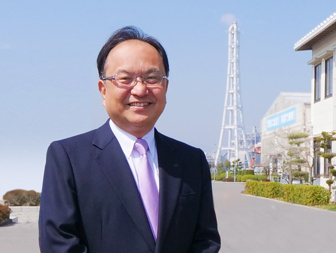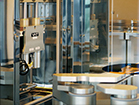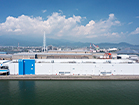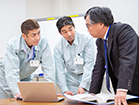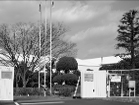HISTORY / ABOUT History

- 1983
-
- Company established on April 1 as a 50-50 joint venture between Sumitomo Heavy Industries, Ltd. and Eaton Corporation in the U.S.
- Production of the NV-10 high-current ion implanter started.
- 1984
-
- Full domestic production of the NV-10 high-current ion implanter started.
- Shipment of the world’s first high-current ion implanter supporting 150-mm wafers started.
- 1987
-
- Domestic development and shipment of the NV-10SD high-current ion implanter equipped with a single large wafer-disk end station (Super Disk or SD) started.
- 1989
-
- Shipment of the domestically developed NVGSD-80 high-current ion implanter equipped with a loadlock high-throughput end station (Gyro Super Disk or GSD) started.
- 1991
-
- Shipment of the NV-GSD-A high-current ion implanter with increased beam current and improved throughput with 200-mm wafers started.
- 1994
-
- Shipment of the NV-GSD-HE high-energy ion implanter for mass production jointly developed with Eaton Corporation started.
- Shipment started of the NV-GSD III-90 high-current ion implanter serving as the global standard, which achieved high throughput and a compact size with the adoption of a newly developed beam line.
- 1995
-
- Construction of Building F and a new clean room in the Ehime Plant completed.
- 1996
-
- Construction of Building G of Ehime Plant completed, which doubled the production capacity.
- 1997
-
- Shipment of the NV-GSD III-90E low-energy, beam current enhanced, high-current ion implanter started.
- NV-GSD-HC3 high-current ion implanter supporting 300-mm wafers completed.
- Import and sales of Eaton Corporation’s ion implanter, ORion NV-6072, for low-temperature polysilicon TFT-LCD started.
- 1998
-
- Shipment started of a 1-keV class, low-energy high-current ion implanter, the NV-GSD-LE, with a renovated beam line.
- Shipment of the NV-GSD-HE3 high-energy ion implanter supporting 300-mm wafers started.
- 1999
-
- Sense-Ion Co., Ltd. established to advance into the business of selling recycled used implanters.
- Obtained ISO9001 certification.

- 2000
-
- The semiconductor device manufacturing system business spun off from Eaton Corporation became Axcelis Technologies, Inc.
- Shipment of the NV-MC3 medium-current ion implanter supporting 300-mm wafers started.
- Shipped 500th unit.
- Technology of the NV-GSD-LE transferred to Axcelis and its production in the U.S. started.
- 2001
-
- Shipment started of a 200-eV class, extremely low-energy high-current ion implanter, the LEX.
- Shipment of the domestically developed ORion II NV-7392 ion implanter for flat panels started.
- 2002
-
- Shipment of the LEX3 300-mm extremely low-energy ion, high-current implanter started.
- ISO14001 certification obtained.
- 2003
-
- Shipment of the ORion II NV-6275 ion implanter for flat panels started.
- 2004
-
- Shipment started of the LEX3-II high-current ion implanter supporting 300-mm wafers with increased beam current at an extremely low energy.
- 2005
-
- Shipment of the SHX single-wafer type high-current ion implanter supporting future generations up to 45-nm nodes developed under a totally new concept started.
- 2006
-
- Company name changed to SEN-SHI and Axcelis Co., Ltd.
- 2009
-
- The merger between Axcelis Technologies and Sumitomo Heavy Industries dissolved—we became the sole parent company, and with this, the company name changed to SEN Corporation.
- 2011
-
- Shipment of MC3-II/GP, medium-current ion implanters with world-class implanter quality, started.
- 2013
-
- Shipment of the world-first single-wafer ultra-high energy implanter S-UHE started.
- 2015
-
- Company name changed to Sumitomo Heavy Industries Ion Technology Co., Ltd.
- 2017
-
- Shipment of the all-in-one ion implanter SAion started.
- Development of SS-UHE started, with better energy and beam current than S-UHE.
- 2019
-
- A design and development office was established within Item Ehime of the Ehime World Trade Center.
- 2022
-
- Establishment of a new factory.
- 2023
-
- Development of SS-UHE Ⅱ for the image sensor market.
- 2025
-
- Integrates Laser System and Ion Implanters Operations to Strengthen Semiconductor Business
- Merged Sense Corporation





